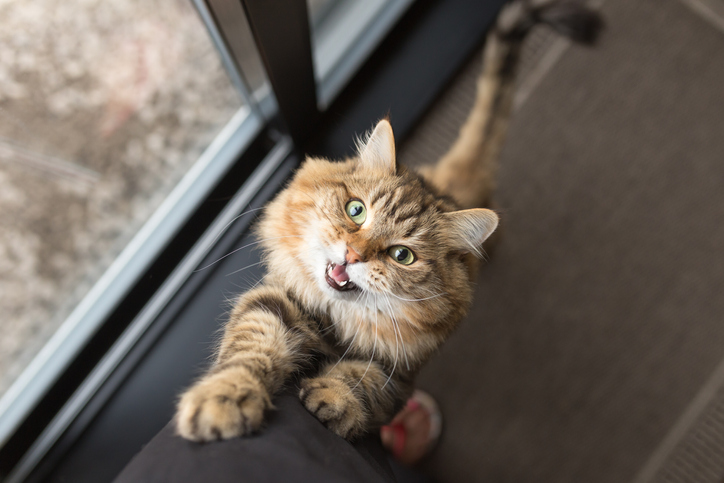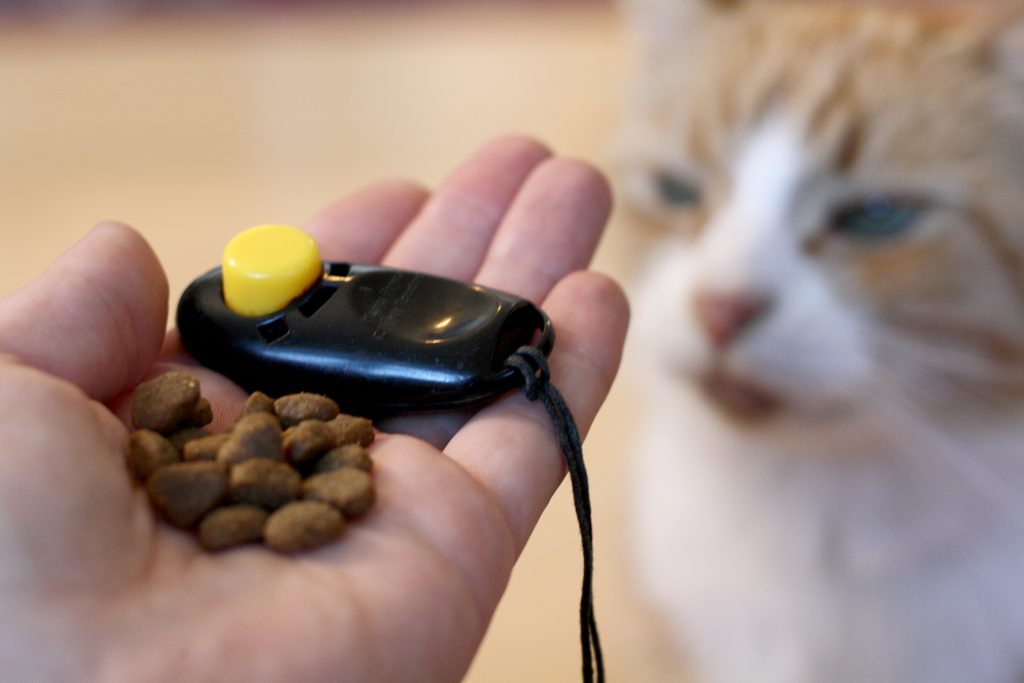Cats meow for a variety of reasons, and while many cat owners find meowing cute, excessive meowing can become annoying. Greeting you, drawing your attention to something, vocal disapproval, indicating pain, and asking you to pet them are all reasons for a cat to meow. But some cats are conditioned to meow in exchange for attention. Once you have determined that your cat does not have any medical or environmental problems, you can begin training your cat to stop meowing excessively.
Table of Contents
Solve medical problems for your cat
Make sure your cat has food and water.
A common cause of meowing in cats is that they want to let their owners know that the food or water bowl is empty. If you know your cat tends to meow at feeding times, try to stick to a strict schedule instead of immediately rewarding her meowing with food. This will help you both get used to a feeding time and this can help curb the excessive meowing before it starts.
- While you may choose to limit your cat’s access to food, make sure he always has access to clean drinking water – day and night.
Check the litter box.
If your cat meows excessively, chances are he’s trying to let you know that you need to clean his litter box. Or maybe she’s trying to let you know that she “needs to” but can’t find her litter box or can’t get into it. This is another case where maintaining a regular schedule can help correct the problem before your cat starts meowing.
- Scoop feces from the litter box daily.
- Empty the litter box and replace the litter once or twice a week, depending on how many cats you have and how often they use the litter box.
Make sure your cat isn’t in pain.
If your cat meows excessively, it is possible that he has injured himself or is feeling sick. Give your cat a quick exam or consider taking him to the vet for this.
- Check the cat’s eyes and nose for discharge.
- Using one or two hands, carefully examine your cat’s stomach, starting at the spine and moving to the stomach. Look for signs of pain or discomfort as you gently palpate the abdomen.
- Using one or both hands, carefully examine your cat’s limbs and paws. Don’t overextend your cat’s limbs. Gently bend the joints as your cat would if he were walking and moving. When examining paws, joints, and extremities, look for pain or discomfort.
Consider your cat’s breed.
Some cat breeds, most notably Siamese, are more “vocal” than others and naturally tend to meow and yelp more. If this is the case, your cat may simply feel the need to meow, regardless of the circumstances
Consider your cat’s age.
Older cats may meow excessively because of health problems – with an overactive thyroid being the most common. The excess thyroid hormones stimulate the cat and it will probably meow randomly. Another cause may be that your cat has become deaf and lost his “volume control” and as a result his voice has become louder and more persistent. If you have any doubts, have your cat examined by a veterinarian.

Solve environmental problems for your cats
Consider whether your cat has recently experienced a change.
Moving to new accommodation, a change in your work schedule, a new furniture arrangement, and a new pet can be factors that cause a cat to meow. Even relatively small changes like these can seem catastrophic to cats who don’t understand that their living situation hasn’t necessarily changed all that much. If you’ve recently moved or got a new pet, give your cat time to adjust before trying to train it to stop meowing. There’s a chance she’ll give up on her own as she settles in and gets used to her new living situation.
Consider whether your cat is lonely.
Sometimes a cat meows to let you know that it misses you or needs more affection. If possible, spend more time with her as this can reduce her boredom and loneliness that causes her to meow excessively.
Play more with your cat.
If your cat meows because it’s bored or has separation anxiety, active play with it every day can help break this habit.
Give your cat an automatic feeder.
An automatic feeder that releases food at a set time can help stop your cat’s meowing when he wants to be fed.
Install a cat door.
If your cat is allowed to be indoors and outdoors and always meows to be let in or out, consider installing a small cat door. Most existing doors can be adapted to accommodate a cat door. Make sure you have purchased the cat door insert before sawing down your existing door.
Note: This should only be done with a cat that has already lived outside. If your cat has lived indoors all of its life, access to the outside world can result in serious injury or death because it is not adapted to life outside your home.
- Measure your cat’s height and width and make sure it will fit through the cat door you purchased. Draw an outline of the future door. You want to make sure the cat door you’re installing is the right size before making any cuts in your existing door.
- Unhook the door and lay it flat on a flat surface. A sawhorse works best for this.
- Drill holes in each corner of the future cat door. Once you have drilled the initial holes, use a jigsaw to saw along the lines you drew and cut out the square or rectangle that will become your cat’s entrance.
- Insert the frame of the cat door you purchased. It should fit flush into the hole you sawed in the door.
- Screw the cat door frame into the hole you sawed in the existing door. Hang your door back up and test the door system.

Train your cats to stop meowing
Don’t reward your cat when it meows.
If all of your cat’s needs are met and he is only meowing for attention and you have made sure there are no environmental or health issues, try simply ignoring his meowing. Over time, your cat will realize that you only give her attention when she behaves correctly.
- Don’t yell at your cat for meowing excessively. Never hit or hurt your cat.
- Be patient with your cat. Training an animal takes time and consistency, but eventually she will learn what behaviors elicit a positive response from you.
Ask your vet if your cat has been spayed/neutered.
Sometimes cats that are looking for a mate and have not been spayed or neutered meow excessively during the mating season; This is usually from February to September in most places in the Northern Hemisphere. Talk to your vet about whether your cat is in mating season and whether spaying/neutering could alleviate the problem.
Use a training clicker.
Some trainers have found that training your cat to look forward to a treat when he is quiet and otherwise meows incessantly can help break the meowing habit.
- Every time your cat stops meowing, activate the clicker sound.
- Give your cat a small treat. Praise her for doing what you wanted.
- This may take a long time, but with patience your cat will eventually associate their silence with praise and/or treats.

Tips
- If your cat doesn’t have any medical, emotional, or environmental problems, she may just meow for your affection. Complying with this will only reinforce her understanding that this is the way to get what she wants. It’s best to tolerate this behavior if this is the problem (sometimes you may need earplugs to sleep) and reward her when she doesn’t vocalize.
Warnings
If you think your cats may have a medical problem, take them to the vet immediately . Don’t delay treatment. It is better to take her to the vet and learn that she needs more attention at home, for example, than to put it off and risk a possible health problem getting worse.